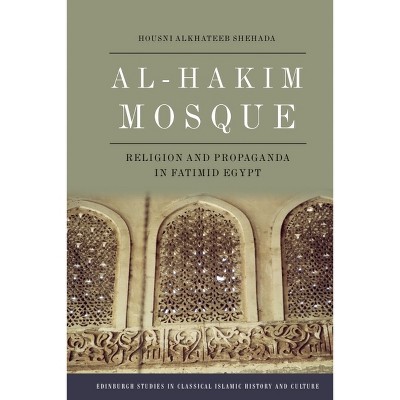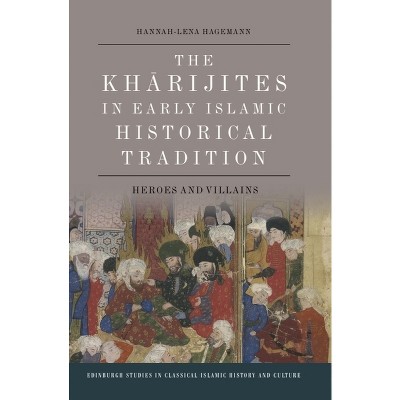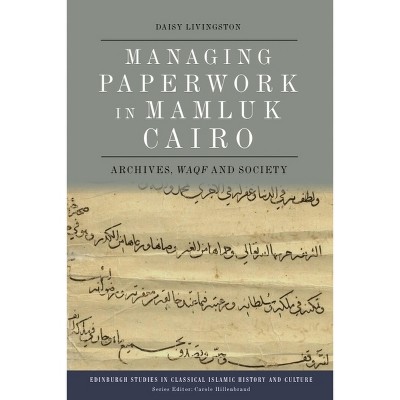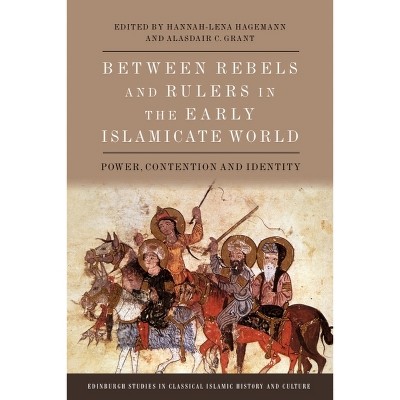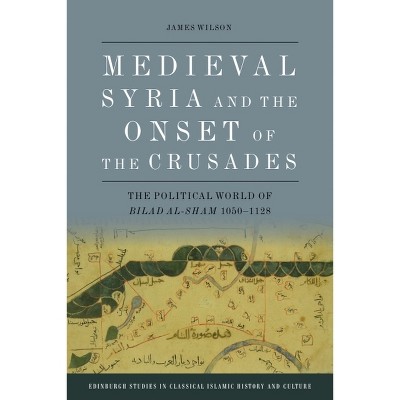A History of Herat - (Edinburgh Studies in Classical Islamic History and Culture) by Shivan Mahendrarajah (Paperback)

About this item
Highlights
- This book tells the history of Herat, from its desolation under Chingiz Khan in 1222, to its capitulation to Tamerlane in 1381.
- About the Author: Dr. Shivan Mahendrarajah is a Research Fellow (2021-24), School of History, University of St. Andrews, Scotland.
- 382 Pages
- History, Middle East
- Series Name: Edinburgh Studies in Classical Islamic History and Culture
Description
About the Book
Shows how and why an ancient city destroyed and then rebuilt by Mongols became the 'Pearl' of the Iranian east
Book Synopsis
This book tells the history of Herat, from its desolation under Chingiz Khan in 1222, to its capitulation to Tamerlane in 1381. Unlike the other three quarters of Khurasan (Balkh, Marw, Nishapur), which were ravaged by the Mongols, Herat became an important political, cultural and economic centre of the eastern Islamic world. The post-Mongol age in which an autochthonous Tajik dynasty, the Kartids, ruled the region set the foundations for Herat's Timurid-era splendors.
Divided into two parts (a political-military history and a social-economic history), the book explains why the Mongol Empire rebuilt Herat: its rationales and approaches; and Chinggisid internecine conflicts that impacted on Herat's people. It analyses the roles of Iranians, Turks and Mongols in regional politics; in devising fortifications; in restoring commercial and cultural edifices; and in resuscitating economic and cultural activities in the Herat Quarter.
Review Quotes
A centre of Persian political power and cultural magnificence in the post Mongol era, Herat has been written out of contemporary nationalist Iranian and Afghan histories. Shivan Mahendrarajah restores Herat to its rightful place in this lucidly written and intensively researched book that is a pleasure to explore.
--Thomas Barfield, Boston UniversityIt is well conceived, well researched, and well written. More importantly, it advances the field not only in knowledge, but the author's innovative approach. This is a significant body of exceptional scholarship and Mahendrarajah lucidly narrates a very complex and often confusing series of events.
--Timothy May, Associate Dean of Arts and Letters, University of North GeorgiaMahendrarajah's study of Herat under Kartid rule views the Ilkhanate from a fresh and unexpected angle.
-- "Bulletin of SOAS"This study views the unfolding events and unraveling political shenanigans in Mongol Greater Iran from the viewpoint of Herat and its Persian Kartid rulers. The result is a fresh perspective on the Ilkhanate and the emergence of the Timurids. This History of Herat will undoubtedly become the standard textbook for the study of the region during this period, and future scholars will be extremely indebted to Shivan Mahendrarajah for the focused effort and attention to detail that went into this impressive work of research and analysis.
--George Lane "Journal of Islamic Studies"Mahendrarajah's study of Herat under Kartid rule views the Ilkhanate from a fresh and unexpected angle.-- "Bulletin of SOAS"
This study views the unfolding events and unraveling political shenanigans in Mongol Greater Iran from the viewpoint of Herat and its Persian Kartid rulers. The result is a fresh perspective on the Ilkhanate and the emergence of the Timurids. This History of Herat will undoubtedly become the standard textbook for the study of the region during this period, and future scholars will be extremely indebted to Shivan Mahendrarajah for the focused effort and attention to detail that went into this impressive work of research and analysis.--George Lane "Journal of Islamic Studies"
About the Author
Dr. Shivan Mahendrarajah is a Research Fellow (2021-24), School of History, University of St. Andrews, Scotland. He is the Managing Editor of Afghanistan: The Journal of the American Institute of Afghanistan Studies, which he co-founded in 2016. He is a fellow of the Royal Historical Society. Shivan is the author of articles on Islam, Iran, Afghanistan, Mongols, and Timurids; on counter-insurgency, al-Qaida, and the Taliban movements of Afghanistan and Pakistan. His first monograph, The Sufi Saint of Jam, was published by Cambridge University Press (2021).






